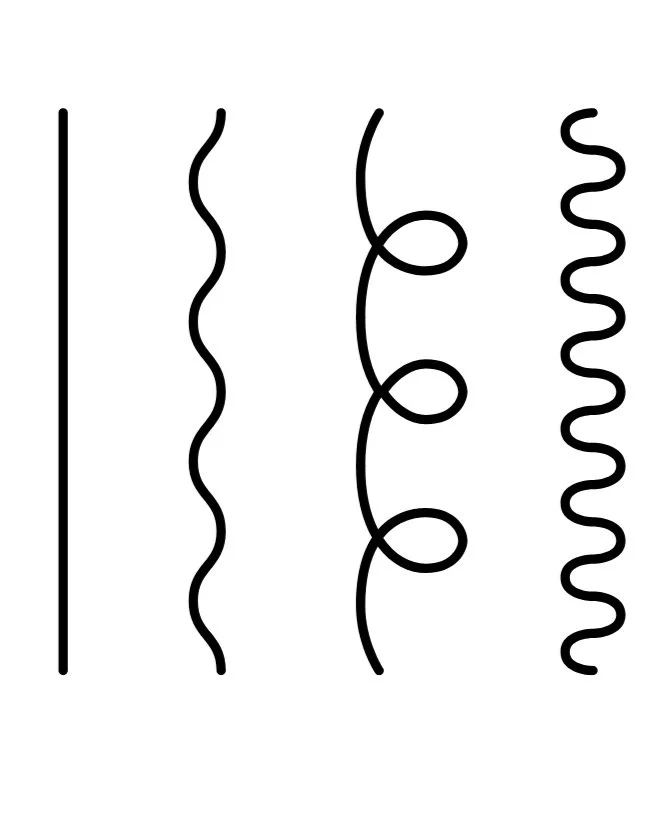Understanding Hair Types & How to Care for Them
Hair Typing-
Hair types are generally categorized using the Andre Walker Hair Typing System, which breaks hair into four main categories:
Type 1: Straight
Type 2: Wavy
Type 3: Curly
Type 4: Coily/Kinky
Each of these categories is further divided into subcategories (A, B, and C) based on the width and tightness of the strands.
When it comes to hair care, one size doesn’t fit all. Understanding your hair type is the key to choosing the right products, treatments, and routines to keep your locks looking their best. Whether your hair is straight, wavy, curly, or coily, each type has unique characteristics and requires specific care to maintain health and manageability. Let’s dive into hair types and how to best care for them.
Hair Type Classification
Type 1: Straight Hair
Straight hair is the easiest to identify—it’s naturally sleek and falls without forming waves or curls.
Subtypes:
1A: Very fine, thin, and lacks volume.
1B: Straight with a bit more body and volume.
1C: Thicker and coarse, may have slight bends.
Straight Hair Care Tips:
• Use lightweight products to avoid weighing hair down (look for volumizing shampoos and mousses).
• Avoid excessive oils unless the hair is dehydrated. A lightweight serum or dry oil works best.
• Clarify regularly to prevent buildup since straight hair can get greasy quickly.
• Add texture with dry shampoos, sea salt sprays, or lightweight styling creams.
Type 2: Wavy Hair
Wavy hair sits between straight and curly, often forming an “S” shape.
Subtypes:
2A: Loose, barely-there waves.
2B: More defined waves with some frizz.
2C: Thick, deep waves that verge on curls.
Care Tips:
• Use lightweight, moisturizing products to enhance waves without weighing them down.
• Avoid heavy oils and butter, which can flatten waves.
• Diffuse hair or air-dry to encourage wave formation.
• Control frizz with anti-humidity serums or curl-enhancing creams.
Type 3: Curly Hair
Curly hair naturally forms ringlets and has more volume and bounce.
Subtypes:
3A: Loose, large curls with a soft texture.
3B: Tighter, springier curls with more volume.
3C: Coily, densely packed curls that resemble corkscrews.
Care Tips:
• Hydration is key! Use sulfate-free, moisture-rich shampoos and conditioners.
• Use leave-in conditioners to maintain curl definition and prevent dryness.
• Avoid brushing when dry. Instead, use a wide-tooth comb or fingers when hair is wet.
• Try the “plopping” method with a microfiber towel to enhance curls and reduce frizz.
Type 4: Coily/Kinky Hair
Coily hair has a tight curl pattern that ranges from springy coils to zig-zag textures.
Subtypes:
4A: Soft, defined coils.
4B: Z-shaped, less defined curls.
4C: Tightly coiled, with little to no natural curl definition.
Care Tips:
• Moisturize, moisturize, moisturize! Use rich leave-ins, butters, and oils to keep hair hydrated.
• Protective styles (braids, twists, etc.) help minimize manipulation and retain length.
• Co-washing (using conditioner instead of shampoo) can help prevent dryness.
• Use the LOC/LCO method (Liquid, Oil, Cream) to lock in moisture.
Final Thoughts
Understanding your hair type helps you create a routine that enhances its natural beauty while preventing common issues like frizz, dryness, or limpness. The key to healthy hair is hydration, protection, and the right products tailored to your specific texture. Whether you have straight, wavy, curly, or coily hair, embracing your natural pattern and giving it the proper care will ensure it thrives!
Are you struggling to identify your hair type or need personalized recommendations? Drop a comment below—I’d love to help!
